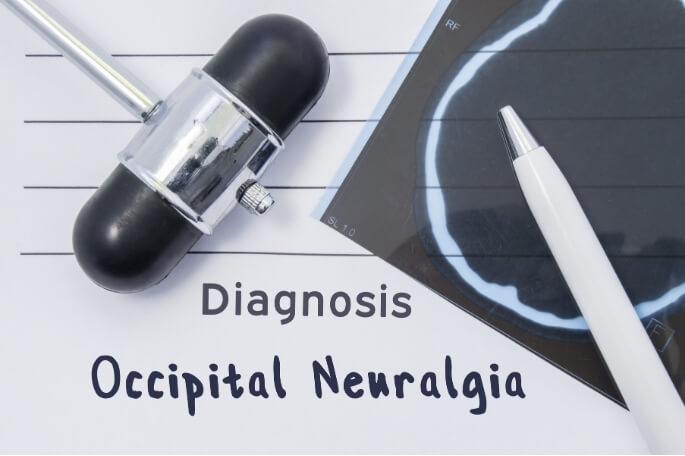
Sharp, shooting pain from your upper neck to your head or behind your eyes could be occipital neuralgia – not just ordinary neck pain.
Neck pain is incredibly common — in fact, it’s one of the leading causes of disability worldwide. But not all neck pain is the same.
Understanding the difference is crucial for getting the right treatment. At the Gold Coast Headache and Migraine Clinic, our clinicians are experts in identifying and treating these often-misunderstood conditions using advanced techniques, including the Watson Headache® Approach.
I’m David McCawley, Headache Clinician with a Bachelor of Biomedical Science and a Bachelor of Physiotherapy (Honours), and nearly a decade of experience, I have seen the full extent of how debilitating headaches and migraines can affect people from all walks of life, particularly those who may be more vulnerable or at risk.
In this blog, I will discuss the presentation of Occipital Neuralgia, importance of accurate diagnosis and management strategies.
What Is Occipital Neuralgia?
Occipital neuralgia is a type of nerve pain that arises from irritation of the greater, lesser, or third occipital nerves, which run from the top of the spinal cord at the level of the Brainstem and at the base of the neck up to the scalp.
Common Symptoms Include:
- Shooting, stabbing, or electric-shock-like pain at the back of the head or upper neck
- Pain that radiates behind the eyes, scalp, or forehead
- Tenderness over the occipital nerve (often just below the base of the skull)
- Possible scalp sensitivity or numbness
- Symptoms aggravated by neck movement or prolonged head positions
How Is This Different from Regular Neck Pain?
| Feature | Occipital Neuralgia | Regular Neck Pain |
| Pain Character | Sharp, electric, shooting | Dull, aching, or stiff |
| Pain Location | Starts at base of skull and may radiate to scalp | Localised to neck, may spread to shoulders |
| Nerve Involvement | Involves occipital nerves | Usually muscular or joint-related |
| Scalp Sensitivity | Common | Rare |
| Response to Pressure on Neck | Pain reproduced with pressure on occipital nerves | Pain reproduced with muscle palpation or joint testing |
How Can Physiotherapy Help?
- Accurate Diagnosis
Physiotherapists trained in headache and cranio-cervical disorders are uniquely positioned to assess whether your symptoms stem from occipital neuralgia or a musculoskeletal source. A detailed assessment of joint mobility, nerve sensitivity, posture, and muscle tension is critical.
- Hands-On Treatment
- Manual therapy to reduce compression around the occipital nerves
- Soft tissue mobilisation and trigger point release to calm muscle tension
- Cervical spine mobilisation, especially of the upper cervical segments (C0-C3), which may be indirectly irritating the nerves
- Neural Mobilisation
Special techniques can help improve nerve mobility, reduce hypersensitivity, and restore proper nerve function.
- Postural and Ergonomic Education
Addressing poor head and neck posture (common in desk work or device use) helps reduce strain on the upper cervical spine and occipital nerves.
- The Watson Headache® Approach
This internationally recognised method focuses on the upper cervical spine, particularly segments C0-C3, which are strongly linked to headache and neuralgic symptoms.
Key Features of the Watson Approach
- Precisely identifies dysfunctional upper neck joints that may sensitise the trigeminocervical nucleus — a key pain processing centre for head and neck pain.
- Involves sustained pressures and gentle mobilisation techniques to reduce the underlying driver of the neuralgia.
- Highly specific assessment that reproduces and then relieves symptoms — confirming the cervical source.
Is It Effective for Neuralgia?
Yes — when occipital neuralgia is secondary to cervical dysfunction, the Watson Approach has shown excellent results.
By desensitising the sensitised brainstem and reducing mechanical irritation, patients can experience:
- Significant pain reduction
- Improved nerve mobility
- Lower recurrence rates
- Better sleep and concentration
Final Thoughts
Occipital neuralgia is often misdiagnosed as tension-type headaches, migraines, or “just neck pain.” Getting a proper diagnosis and the right treatment can make all the difference.
If you’re struggling with persistent head or upper neck pain that hasn’t responded to usual care, a detailed physiotherapy assessment — particularly from clinicians trained in the Watson Headache® Approach — can help you get to the root of the problem and start feeling better.
Book an Appointment
To find out whether your symptoms could be related to occipital neuralgia or cervical spine dysfunction, book an appointment with one of our trained clinicians today at the Gold Coast Headache and Migraine Clinics.
Written by:
References
Bogduk, N. (2003). Anatomy and physiology of headache. Biomedicine & Pharmacotherapy, 57(10), 401–407. https://doi.org/10.1016/j.biopha.2003.10.004
Watson, D. H., & Drummond, P. D. (2014). Head pain referral during examination of the neck in migraine and tension-type headache. Headache, 54(6), 1035–1045. https://doi.org/10.1111/head.12354
Dash, C., & Al-Sharif, A. (2021). Occipital neuralgia: A literature review and retrospective study on diagnostic criteria and treatment. Cureus, 13(7), e16491. https://doi.org/10.7759/cureus.16491







